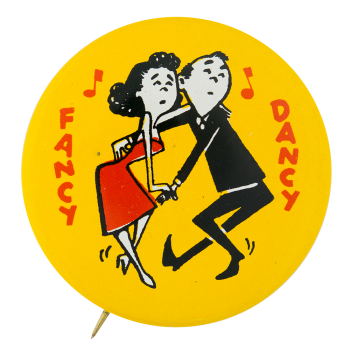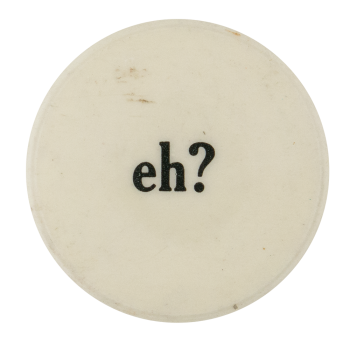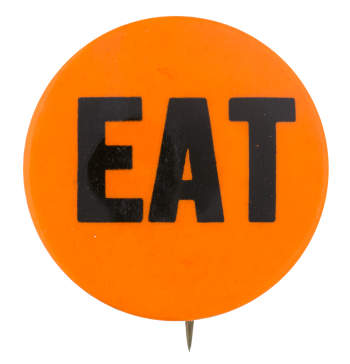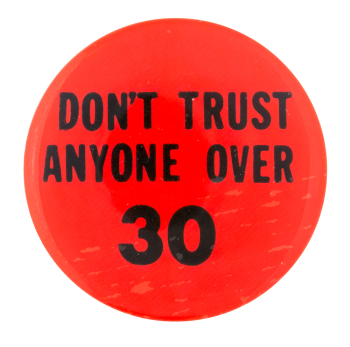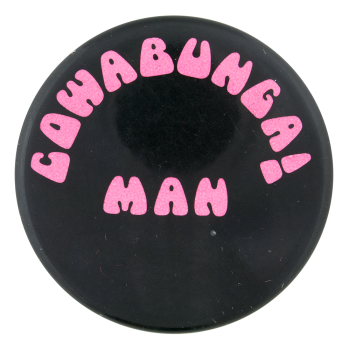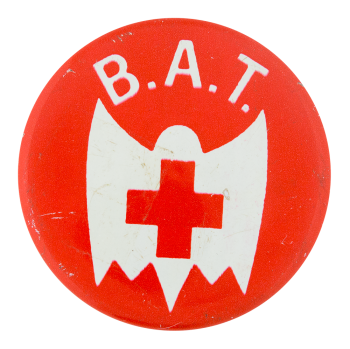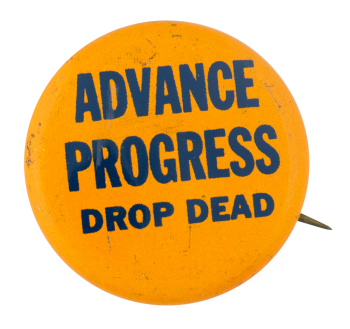Fancy Dancy
| Category | |
|---|---|
| Additional Images | |
| Sub Categories | |
| Text on Button | FANCY DANCY |
| Image Description | Yellow background. A picture of a woman in a red dress and a man in a black suit with red music notes on each side of their heads. Red text on both sides of the two figures dancing |
| Back Style | |
| The Shape | |
| The Size | |
| Additional Information | The phrase “Fancy dancy” has indeterminate origins, but it can be found in print as far back as 1861, when the Red Bluff Beacon quoted an opinion piece in the La Crosse Democrat on the details of going on a date to a dance cautioning, “don’t take a girl to a fancy dancy party unless you know all the ropes!” |
| Sources |
Fancy Dances. (1861, March 6). Red Bluff Beacon. https://cdnc.ucr.edu/?a=d&d=RBB18610306.2.5&e=-------en--20--1--txt-txI… |
| Catalog ID | IB0044 |

